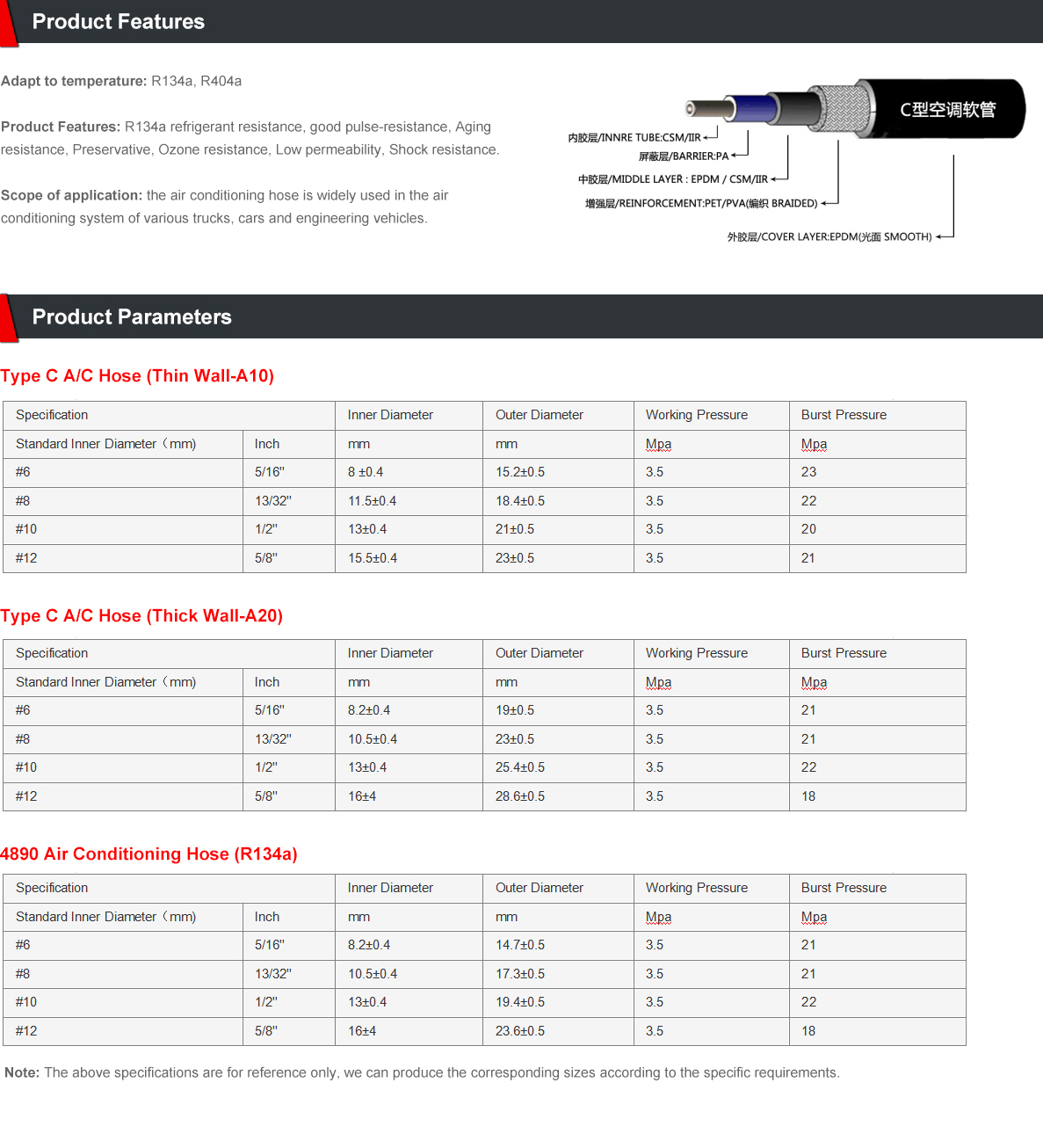honda power steering hose replacement
Honda Power Steering Hose Replacement A Comprehensive Guide
Power steering is an essential component of modern vehicles, providing drivers with the ease of maneuverability. Honda cars, known for their reliability and performance, use power steering hoses to ensure efficient hydraulic fluid transmission. Over time, these hoses may wear out or become damaged, leading to reduced steering effectiveness and potential leaks. This article will guide you through the process of replacing the power steering hose in your Honda, ensuring that your vehicle remains in top condition.
Understanding the Power Steering System
Before diving into the replacement process, it’s important to understand the role of the power steering hose in your vehicle. The power steering system operates through hydraulic fluid, which helps amplify the driver’s steering input. The power steering hose carries this fluid from the pump to the steering gear or rack. Over time, wear and tear from heat, vibration, and exposure to road debris can compromise the integrity of the hose, resulting in leaks or breaks.
Signs You Need a Replacement
Before you proceed with the replacement, it’s crucial to recognize the signs indicating that your power steering hose is failing. Some common symptoms include
1. Fluid Leaks If you notice power steering fluid pooling under your vehicle or low fluid levels observed in the reservoir, it may indicate a leak in the hose. 2. Whining Noise A whining or groaning sound when turning the steering wheel can suggest that the pump is struggling due to inadequate fluid pressure, often stemming from a damaged hose. 3. Stiff Steering If steering becomes difficult or feels heavy, it could indicate that the power steering system is not getting enough fluid from the pump. 4. Visible Damage Inspecting the hose for cracks, fraying, or bulging can be a straightforward way to determine its condition.
Tools and Materials Needed
Before starting the replacement, gather the necessary tools and materials
- New power steering hose (specific to your Honda model) - Power steering fluid - Wrenches and sockets - Screwdrivers - Pliers - Shop towels - Drain pan - Safety goggles and gloves
Step-by-Step Replacement Process
honda power steering hose replacement

1. Safety First Begin by parking your Honda on a level surface and ensuring the engine is cool. Turn off the ignition, engage the parking brake, and wear safety goggles and gloves.
2. Locate the Power Steering Hose Open the hood and locate the power steering reservoir and the hose. Follow the hose from the reservoir to the steering rack, identifying the connection points.
3. Drain the Fluid Place a drain pan under the power steering system to catch any fluid that may spill during the process. Loosen the hose clamps and detach the hose from the reservoir, allowing the fluid to drain.
4. Remove the Old Hose Using wrenches or sockets, carefully disconnect the other end of the hose from the steering rack or pump, depending on the setup. Inspect the old hose for damage.
5. Install the New Hose Position the new power steering hose in place. Attach it firmly to both the power steering pump and the steering rack. Ensure that the connections are secure and free from any obstruction.
6. Refill Power Steering Fluid After securing the new hose, refill the power steering reservoir with the recommended type of fluid as per your owner’s manual.
7. Check for Leaks Start your engine and turn the steering wheel from lock to lock several times to help circulate the fluid. Check for any leaks around the new hose connections.
8. Final Checks After confirming there are no leaks, turn off the engine and recheck the fluid level in the reservoir, adding more if necessary.
Conclusion
Replacing the power steering hose in your Honda is a manageable task for those with basic mechanical skills. By following these steps, you can restore the efficiency of your power steering system and ensure safe and pleasant driving experiences. Regular maintenance and timely replacements will keep your Honda in excellent working condition, saving you from potential costly repairs down the line. For those who are not comfortable performing this task, seeking professional help from a certified mechanic is always recommended.
-
Ultimate Spiral Protection for Hoses & CablesNewsJun.26,2025
-
The Ultimate Quick-Connect Solutions for Every NeedNewsJun.26,2025
-
SAE J1401 Brake Hose: Reliable Choice for Safe BrakingNewsJun.26,2025
-
Reliable J2064 A/C Hoses for Real-World Cooling NeedsNewsJun.26,2025
-
Heavy-Duty Sewer Jetting Hoses Built to LastNewsJun.26,2025
-
Fix Power Steering Tube Leaks Fast – Durable & Affordable SolutionNewsJun.26,2025

